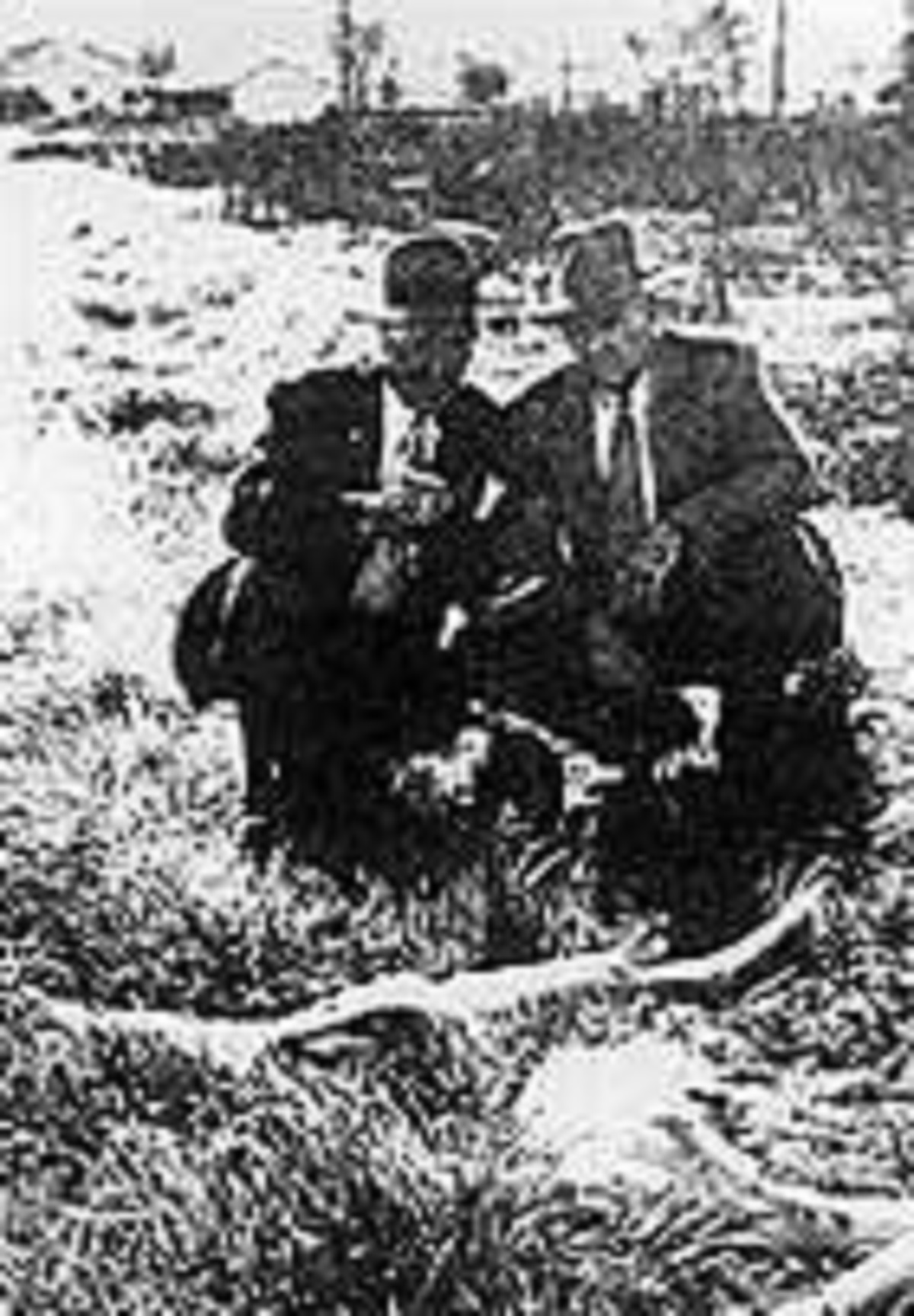Elizabeth Short Autopsy: Unveiling The Dark Secrets Of The Black Dahlia
Elizabeth Short’s story is a chilling tale that continues to haunt the annals of American crime history. Known as the Black Dahlia, her tragic death and the subsequent autopsy report have captivated both investigators and the public alike. This case remains one of the most infamous unsolved murders in history, and the autopsy plays a crucial role in understanding what happened to Elizabeth. So, let’s dive deep into the mystery surrounding her death and what the autopsy revealed.
Now, you might be wondering why the world is so fascinated with Elizabeth Short. Well, it’s not just about the brutal nature of her murder but also the lack of closure that keeps the story alive. The autopsy report became a focal point for investigators trying to piece together the puzzle of her death. It’s like reading a crime novel, except this one is all too real.
Elizabeth Short’s life was tragically cut short at the tender age of 22. Her story is a reminder of how fragile life can be and how some mysteries may never be fully unraveled. In this article, we’ll explore the details of the Elizabeth Short autopsy, the timeline of events, and what it tells us about her final hours. Buckle up, because this is going to be an intense ride!
- Patricia Heaton Nude The Truth Behind The Clickbait Sensation
- Dafne Keen Nude The Truth Behind The Controversy And Misinformation
Who Was Elizabeth Short? A Brief Biography
Before we delve into the autopsy, let’s take a moment to understand who Elizabeth Short really was. Born on July 29, 1924, in Boston, Massachusetts, Elizabeth was a young woman with dreams and aspirations like any other. She had a knack for storytelling and was known for her striking beauty. But behind the facade of charm lay a life filled with challenges and hardships.
Key Details of Elizabeth Short’s Life
Here’s a quick rundown of Elizabeth’s life:
- Birthplace: Boston, Massachusetts
- Family Background: Grew up in a modest family with a father who worked as a boat builder
- Early Life: Struggled with health issues and moved frequently during her childhood
- Career Aspirations: Dreamed of becoming an actress and moved to Los Angeles to pursue her dreams
Despite her short life, Elizabeth left a lasting impression on those who knew her. Her beauty and charm made her stand out, but her tragic end left a scar on the hearts of many.
- Kensley Pope The Rising Star Shaping The Future Of Entertainment
- Unlocking The Power Of Iot Platform Remote Ssh Download
The Elizabeth Short Autopsy: What It Revealed
The autopsy of Elizabeth Short is a critical piece of the puzzle in understanding her murder. Conducted on January 16, 1947, by Dr. Frederick Newbarr, the report provided chilling details about the nature of her death. Let’s break it down step by step.
Key Findings from the Autopsy
Here’s what the autopsy uncovered:
- Cause of Death: Asphyxia due to strangulation
- Body Condition: Severe mutilation, including a clean cut from ear to ear
- Time of Death: Estimated to be around 10 to 12 hours before her body was discovered
- Other Injuries: Bruising and abrasions on various parts of her body, indicating a struggle
The autopsy report painted a grim picture of Elizabeth’s final moments. It revealed the brutal nature of her murder and the meticulous planning involved. The clean cut on her face suggested that the killer had some knowledge of anatomy, adding another layer of mystery to the case.
The Timeline of Events
Understanding the timeline of events surrounding Elizabeth Short’s death is crucial to piecing together the puzzle. Here’s a brief overview:
Elizabeth was last seen alive on January 9, 1947, in Los Angeles. Her body was discovered six days later in a vacant lot in Leimert Park. The discovery sent shockwaves through the city, and the media quickly dubbed her the "Black Dahlia" due to her striking appearance and the nature of her death.
What Happened Between January 9 and January 15?
While the exact events remain unclear, investigators believe that Elizabeth was held captive for several days before her death. The condition of her body suggested that she had been tortured and subjected to unimaginable horrors. The timeline of events adds another layer of complexity to the case, leaving many questions unanswered.
The Role of the Autopsy in Solving the Case
The autopsy report played a pivotal role in the investigation of Elizabeth Short’s murder. It provided investigators with crucial information about the cause of death, the nature of the injuries, and the possible methods used by the killer. However, despite the detailed report, the case remains unsolved to this day.
Why Was the Autopsy Important?
Here’s why the autopsy was so significant:
- Evidence Collection: The autopsy provided valuable evidence that helped investigators understand the crime scene
- Victim Identification: Confirmed Elizabeth’s identity and the extent of her injuries
- Killer Profiling: Offered insights into the mindset and methods of the killer
While the autopsy didn’t lead to an arrest, it remains a crucial part of the investigation. It continues to be studied by criminologists and forensic experts to this day.
Public Reaction and Media Coverage
The Elizabeth Short case captured the attention of the entire nation. The media coverage was intense, with newspapers and radio stations providing daily updates on the investigation. The public was both horrified and fascinated by the details of the case, particularly the findings of the autopsy.
Why Did the Media Dub Her the "Black Dahlia"?
The nickname "Black Dahlia" was coined by the media due to Elizabeth’s dark hair and the dramatic nature of her death. It became a symbol of the era’s fascination with crime and the darker side of human nature. The media coverage played a significant role in shaping public perception of the case and keeping it in the spotlight for decades.
Psychological Insights: The Mind of the Killer
The Elizabeth Short autopsy also provided psychological insights into the mind of the killer. Forensic psychologists have long speculated about the motivations and methods of the person responsible for her murder. The autopsy findings suggest a level of meticulous planning and a deep understanding of anatomy, pointing to a killer with a twisted mindset.
What Can We Learn About the Killer?
Here are some key insights:
- Motivation: Likely driven by a desire for control and domination
- Planning: The clean cuts and meticulous mutilation suggest premeditation
- Psychological Profile: Possible traits of a psychopath or sociopath
While we may never know the true identity of the killer, the psychological insights gained from the autopsy continue to be studied by experts in the field.
Legacy of Elizabeth Short
Elizabeth Short’s legacy extends far beyond the tragedy of her death. Her case has inspired countless books, movies, and documentaries, keeping her memory alive for future generations. The autopsy report remains a crucial piece of evidence in understanding the complexities of her murder.
How Has Elizabeth’s Story Impacted Society?
Elizabeth’s story has had a profound impact on society, particularly in the fields of criminology and forensic science. It has highlighted the importance of thorough investigations and the need for advancements in forensic technology. Her case serves as a reminder of the fragility of life and the importance of seeking justice for victims of violent crime.
Modern-Day Implications
In today’s world, the Elizabeth Short autopsy continues to be studied by forensic experts and criminologists. Advances in technology and forensic science have provided new insights into the case, but it remains unsolved. The lessons learned from her case continue to influence modern-day investigations and the pursuit of justice.
What Can We Learn from Elizabeth’s Story Today?
Here are a few key takeaways:
- Importance of Forensic Evidence: The role of autopsies in solving crimes
- Advancements in Technology: How modern tools can help solve cold cases
- Justice for Victims: The need to continue pursuing justice for unsolved cases
Elizabeth’s story is a powerful reminder of the importance of justice and the ongoing fight against violent crime.
Conclusion: The Unanswered Questions
In conclusion, the Elizabeth Short autopsy remains one of the most intriguing aspects of her tragic story. It provides valuable insights into the nature of her death and the methods used by her killer. Despite the detailed report, many questions remain unanswered, and the case continues to captivate the public imagination.
We invite you to share your thoughts and theories in the comments below. Did the autopsy reveal everything we need to know about Elizabeth’s death? Or are there still hidden truths waiting to be uncovered? Let’s keep the conversation going and honor Elizabeth’s memory by seeking the truth.
Table of Contents
- Who Was Elizabeth Short? A Brief Biography
- The Elizabeth Short Autopsy: What It Revealed
- The Timeline of Events
- The Role of the Autopsy in Solving the Case
- Public Reaction and Media Coverage
- Psychological Insights: The Mind of the Killer
- Legacy of Elizabeth Short
- Modern-Day Implications
- Conclusion: The Unanswered Questions
- Mary Burke Tits A Comprehensive Exploration
- Jules Ari Onlyfans Leaks The Untold Story Behind The Headlines

Elizabeth Short Death Body Photos and Autopsy Report Explained

Pictures of Elizabeth Short

Elizabeth Short • Iowa State University Department of English • Iowa